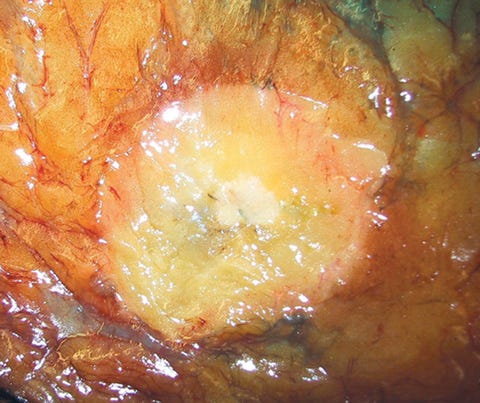Cancer precursor project - list of all breast cancer types
12 August 2025

My cancer precursor project discusses how different types of cancer arise. Part 6 discusses breast cancer and its 46 separate types.
Below are regularly updated lists (alphabetical and by essay) of all breast cancer types and where to find a more complete discussion. Items in italics are not included in the 46 breast cancer types.
Breast tumors and the essays that discuss them
acinic cell carcinoma, part 6d
adenoid cystic carcinoma, part 6l
adenomyoepithelioma with carcinoma, part 6f
angiosarcoma including postradiation, part 6m
BRCA associated carcinoma, part 6e
breast anatomy and histology, part 6b
breast cancer mortality and risk factors, part 6a
breast implant associated anaplastic large cell lymphoma, part 6m
cribriform carcinoma, part 6c, also part 6i (mucinous variant)
DCIS subtype summary and their relationship to invasive breast carcinoma, part 6h, also part 6i (mucinous variant)
encapsulated papillary carcinoma with invasion, part 6d1
epithelioid angiosarcoma, part 6m
glycogen rich carcinoma, part 6g
HER2 low breast cancer, part 6p
HER2 null breast cancer, part 6p
HER2 positive breast cancer, part 6p
HER2 ultralow breast cancer, part 6p
how breast cancer arises, part 6a
infiltrating ductal carcinoma of no special type, part 6b, also part 6i (mucinous variant)
inflammatory carcinoma, part 6o
intraductal papillary carcinoma with invasion, part 6d1
invasive micropapillary carcinoma, part 6h, also part 6i (mucinous variant)
lobular carcinoma, part 6b, also part 6i (mucinous variant)
male invasive breast carcinoma, part 6c
malignant granular cell tumor, part 6f
malignant phyllodes tumor, part 6f
metaplastic carcinoma, part 6j
metaplastic carcinoma: fibromatosis-like, part 6j
metaplastic carcinoma: low grade adenosquamous, part 6j
metaplastic carcinoma: squamous cell carcinoma, part 6d
metastases to the breast, part 6i
mucinous cystadenocarcinoma, part 6i
mucoepidermoid carcinoma, part 6i
myoepithelial carcinoma, part 6m
neuroendocrine carcinoma-large cell, part 6n
neuroendocrine-small cell carcinoma, part 6c and part 6n
neuroendocrine tumor, grade 1, part 6n
neuroendocrine tumor, grade 2, part 6n
pleomorphic lobular carcinoma, part 6b
polymorphous adenocarcinoma, part 6l
solid papillary carcinoma with invasion, part 6d1, also part 6i
tall cell carcinoma with reversed polarity, part 6l
triple negative breast cancer, see also part 6d, part 6k, part 6l, part 6m
tubulolobular carcinoma, part 6o
Breast essays and the tumors they describe:
Part 6a: breast cancer mortality and risk factors and how breast cancer arises.
Invasive breast cancers with premalignant precursors:
Part 6b: breast anatomy and histology, infiltrating ductal carcinoma of no special type, lobular carcinoma and pleomorphic lobular carcinoma.
Part 6c: cribriform carcinoma, secretory carcinoma, neuroendocrine-small cell carcinoma and male invasive breast carcinoma.
Part 6d: tubular carcinoma, triple negative breast cancer (see also part 6d, part 6k, part 6l, part 6m), acinic cell carcinoma and metaplastic carcinoma: squamous cell carcinoma.
Part 6d1: encapsulated papillary carcinoma with invasion, solid papillary carcinoma with invasion and intraductal papillary carcinoma with invasion.
Invasive breast cancers without premalignant or preinvasive precursors:
Part 6e: BRCA associated carcinoma.
Part 6f: adenomyoepithelioma with carcinoma, malignant granular cell tumor and malignant phyllodes tumor.
Part 6g: glycogen rich carcinoma, lipid rich carcinoma, oncocytic carcinoma and sebaceous carcinoma.
Part 6h: apocrine carcinoma and invasive micropapillary carcinoma. It also summarizes all major DCIS subtypes and their relationship to invasive breast carcinoma.
Part 6i: mucinous carcinoma, mucinous cystadenocarcinoma and mucoepidermoid carcinoma. It also discusses other mucinous lesions of the breast (some are variants of types discussed previously) including cribriform carcinoma, infiltrating ductal carcinoma of no special type, invasive lobular carcinoma with extracellular mucin, invasive micropapillary carcinoma, mucinous ductal carcinoma in situ, mucocele-like lesion, solid papillary carcinoma and metastases to the breast.
Part 6j: metaplastic carcinoma (plus other variants not given their own classification), metaplastic carcinoma: fibromatosis-like, metaplastic carcinoma: low grade adenosquamous.
Part 6k: triple negative breast cancer (see also part 6d, part 6k, part 6l, part 6m), provides a detailed discussion of all breast cancers that may be triple negative and discusses how the triple negative phenotype may arise.
Part 6l: triple negative breast cancer (see also part 6d, part 6k, part 6l, part 6m): medullary carcinoma, adenoid cystic carcinoma, polymorphous adenocarcinoma and tall cell carcinoma with reverse polarity.
Part 6m: triple negative breast cancer (see also part 6d, part 6k, part 6l, part 6m).
Part 6n: neuroendocrine types of breast cancer: neuroendocrine tumor, grade 1, neuroendocrine tumor, grade 2 and neuroendocrine carcinoma (large cell and small cell).
Part 6o: inflammatory carcinoma, mixed NST and tubulolobular carcinoma.
Part 6p: HER2 and its relationship to breast cancer, including HER2+ breast cancer, HER2 low breast cancer, HER2 ultralow breast cancer and HER2 null breast cancer.
If you like these essays, please subscribe or share them with others.
Click here for the Index to Nat’s blog on Cancer and Medicine.
Follow me at https://www.linkedin.com/in/nat-pernick-8967765/ (LinkedIn), npernickmich (Threads and Instagram), natpernick.bsky.social (Bluesky) or @nat385440b (Tribel).
Follow our Curing Cancer Network through our Curing Cancer Newsletter, on LinkedIn or the CCN section of our PathologyOutlines.com blog. Each week we post interesting cancer related images of malignancies with diagnoses plus articles of interest. Please also read our CCN essays.
Latest versions of our cancer related documents:
American Code Against Cancer (how you can prevent cancer)
Email me at Nat@PathologyOutlines.com - Unfortunately, I cannot provide medical advice.
I also publish Notes at https://substack.com/note. Subscribers will automatically see my Notes.


